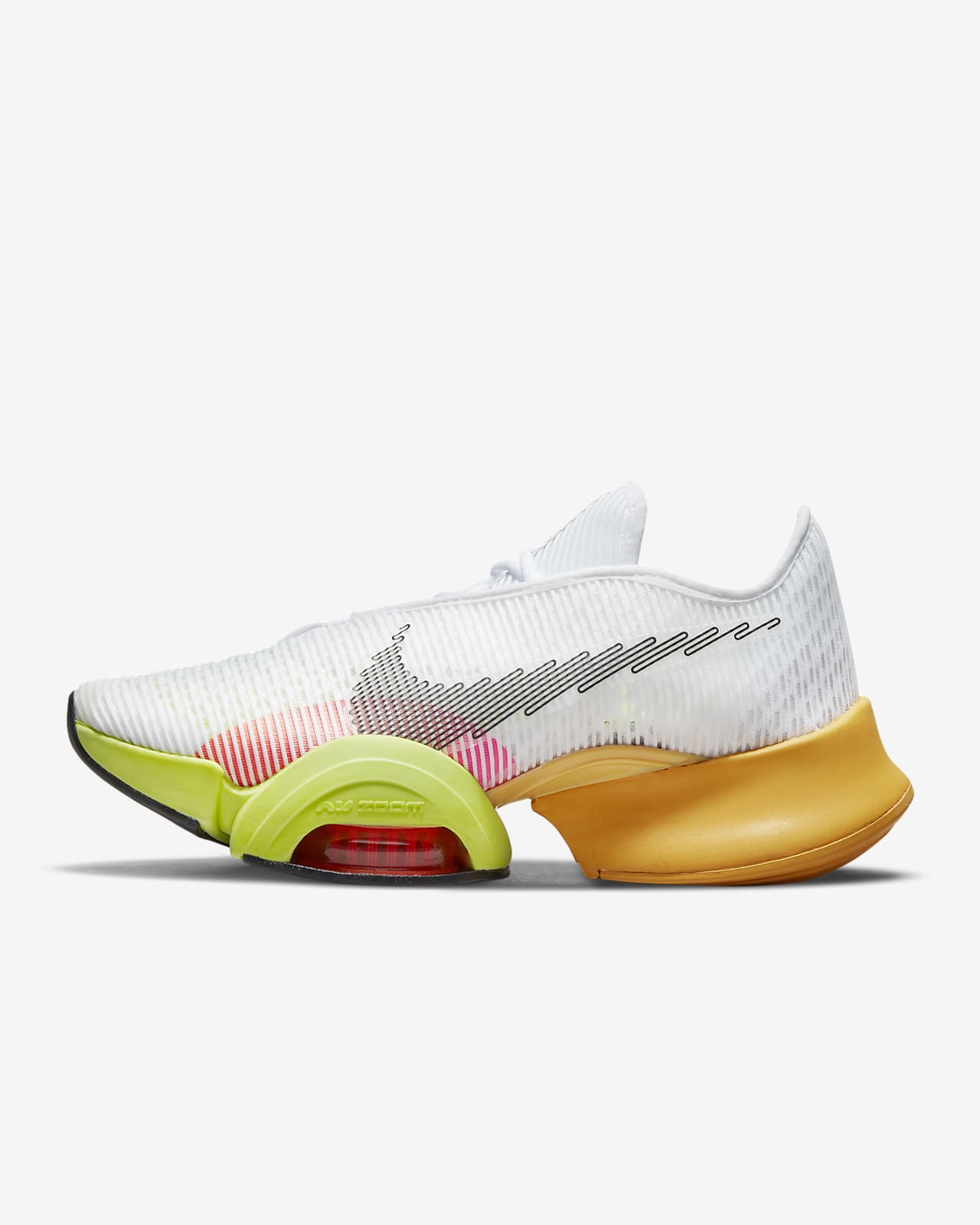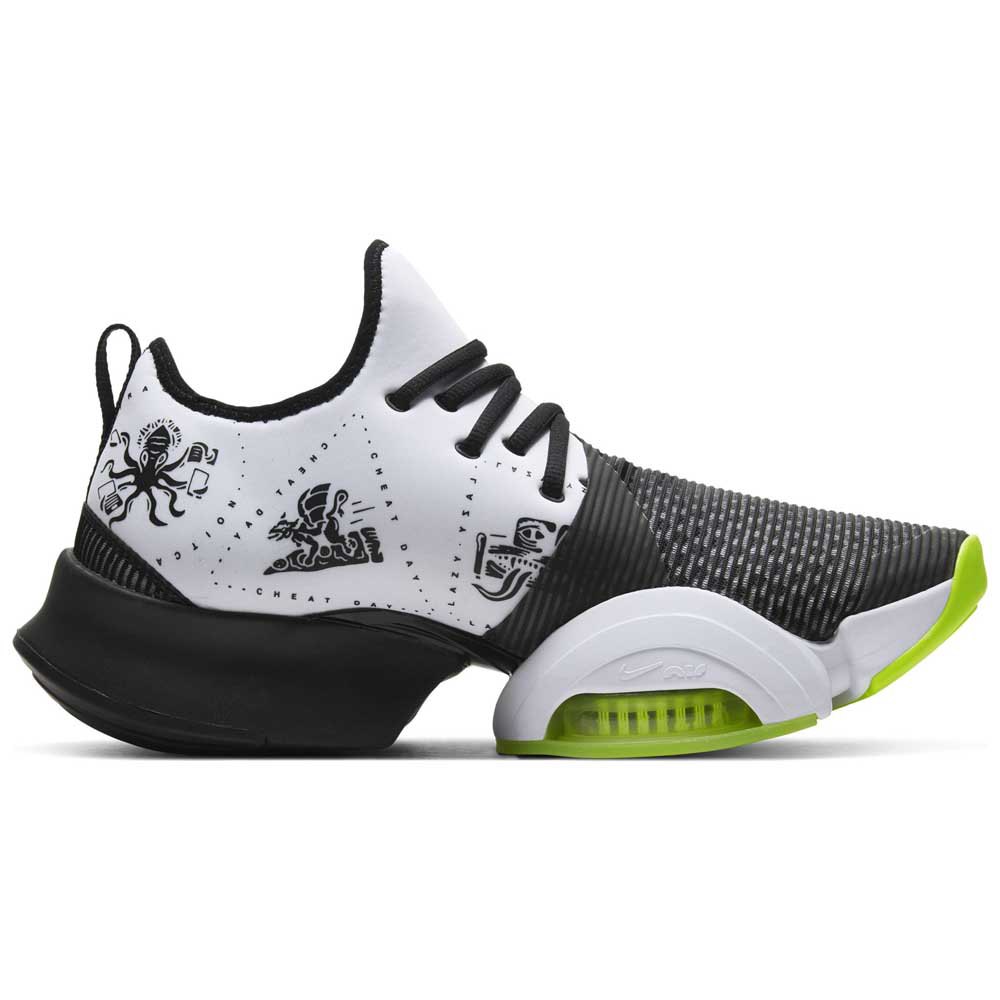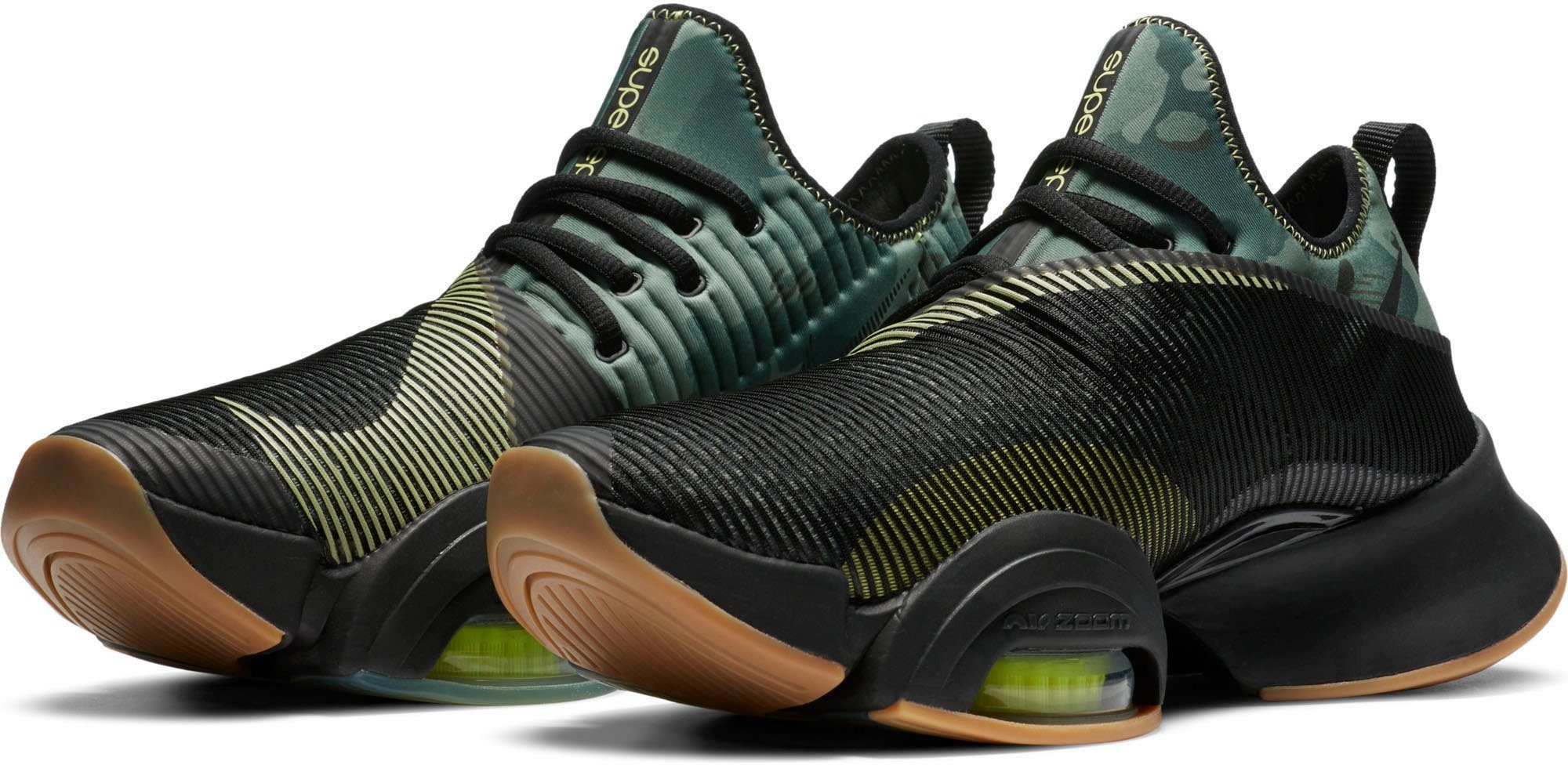
You’d use the running shoe that most people wear for any treadmill work, but then you’d want a lifting shoe for some deadlifts and squats, then something with a bit more cushioning for the box jumps, and something with tight lockdown (basketball shoe, anyone?) for the skater lunges.Įxcept nobody wants to do that - and that’s where the SuperReps come in. And if you wanted to get super-precise, you’d actually need a different sneaker for each. Your average group fitness class is a big sometimes-beautiful (sometimes-decidedly-not-beautiful, but that’s a story for another day) mess of fitness ideas, an effort to pack a bevy of movements into one hour of work. Nike's Air Zoom SuperReps are built for group fitness.

#Nike air zoom superrep 2 x review series#
2, and will run you $120, the first in a series of Nike kicks designed specifically for group fitness. Nike’s first HIIT training class shoes - and at its core, that’s what these kicks are meant for - are really a hit. And then I start to understand (and yes, dig) the Air Zoom SuperReps. Then we start doing the lateral lunges, and the fast-feet drills, and the burpees. I’m a major fan of Nike’s Metcon line, and I’ve used the Reebok Nano, and No Bull’s trainers - and I generally want a shoe without a massively elevated heel and too much cushioning. larger design than what I’d typically use for training. The problem: They’re completely unlike the training sneakers I’m used to, with a raised heel (translation: No way am I doing squats and deadlifts in these), a pair of Zoom Air pockets in the forefoot, and, all around, a much. I’m about to start a half-hour fitness class, and Nike’s just given me a pair of their new Air Zoom SuperReps, a set of training sneakers that, in theory, are built exactly for fitness classes. And with multiple styles and colors to choose from (in Nike men and Nike women's sizes), including a cross-training pair that can be completely customized to coordinate with your favorite workout clothing, you’re sure to find the aesthetic that makes you feel your best.I’m skeptical. What’s more, there’s no question that these shoes look sharp.

Each Nike Metcon shoe comes with its own set of unique features while striking a balance between stability and responsiveness - making them an ideal choice for cross-training. The Nike Metcon is built for your most versatile workouts.Īnd there’s a Nike Metcon shoe for every type of cross-training athlete as well: those who want to minimize weight and enhance speed, those who want the option of a heel lift for weightlifting, and those who need extra flexibility for agility moves. And the lightweight upper allows your feet to breathe, while textured overlays provide durable abrasion resistance. Plus, the rubber outsole tread wraps up your arch, providing traction to help you land jumps on the floor and climb a rope without frustration. These workout shoes are designed for versatility, with a wide, flat heel to provide stability during heavy lifting and enough responsive foam to cushion high-impact movements. One of the most optimal Nike cross-training shoes is the Nike Metcon. You’ll want a shoe that can do it all, so you won’t have to change into a different pair mid-workout. Versatility: The best cross-training shoes are as effective at gripping a rope as they are at supporting a lift or stabilizing a lateral jump.

Aim for the right balance between cushioning and stabilizing features in your training shoes. Cushioning: Some cushioning is needed to absorb impact during plyometric moves, but too much cushioning can throw you off balance during heavy lifting.If you get serious about weightlifting, you might buy special weightlifting shoes. Support and Stability: A good pair of cross-training shoes will provide enough arch support and have a wide base to stabilize your feet during weightlifting moves.Weather Protection: If your workouts take you outdoors, you may need a pair with a water-resistant upper and a durable, non-slip rubber outsole.Breathability: You will undoubtedly sweat, as cross-training can push you to your limits, so move beyond your day sneakers and opt for shoes with a breathable mesh upper.A good pair of trainers should feel comfortable from the first step, but you should also try a variety of movements in each pair before deciding. And make sure the ankle collar doesn’t rub or slip. Fit: Try on your training shoes at the end of the day to make sure there is still enough wiggle room in the toe box after your feet swell (look for a wide toe box).Flexibility: Your cross-training shoes will need an outsole with enough flexibility to handle a variety of cross-training movements, from burpees to box jumps.


 0 kommentar(er)
0 kommentar(er)
